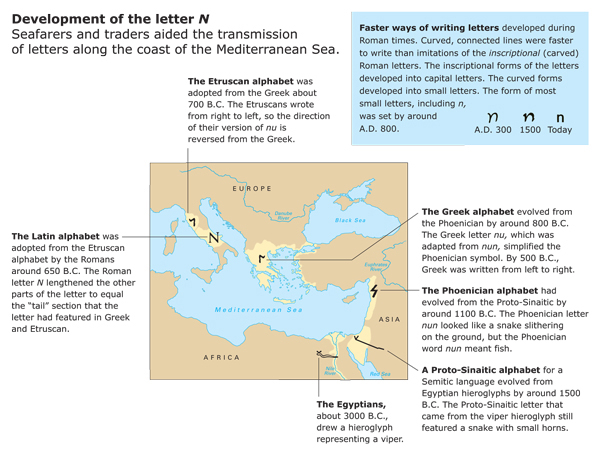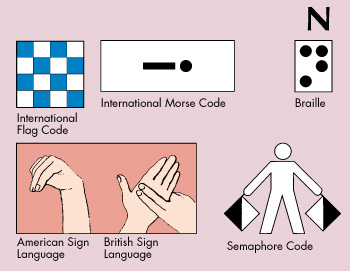N is the 14th letter of the alphabet used for the modern English language. It is also used in a number of other languages, including French, German, and Spanish.

The sound of the letter N occurs in such words as new, enter, can, and funny. At the end of a word, the N sound can be spelled GN, as in sign. The sound represented by the combination NG cannot occur in English at the beginning of a word, but it often occurs at the end of a word, as in sing.
Scholars believe the letter N evolved from an Egyptian hieroglyph (pictorial symbol) that represented a viper (a type of snake). Hieroglyphs were adapted to be used for a Semitic language by around 1500 B.C. The alphabet for this Semitic language—the earliest known alphabet—is called Proto-Sinaitic. By 1100 B.C., an alphabet for another Semitic language, Phoenician, had evolved from Proto-Sinaitic. See Semitic languages .
The Phoenician letter that can be traced to the Egyptian viper hieroglyph is the 14th letter of the Phoenician alphabet, nun. The Phoenicians used the letter to represent the beginning N sound of nun, which was their word for fish. Around 800 B.C., when the Greeks adapted the Phoenician alphabet, nun became nu, which was used for the same sound. The Etruscans adopted the Greek alphabet about 700 B.C. By around 650 B.C., the Romans adopted the alphabet from the Etruscans.

See also Alphabet .
